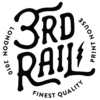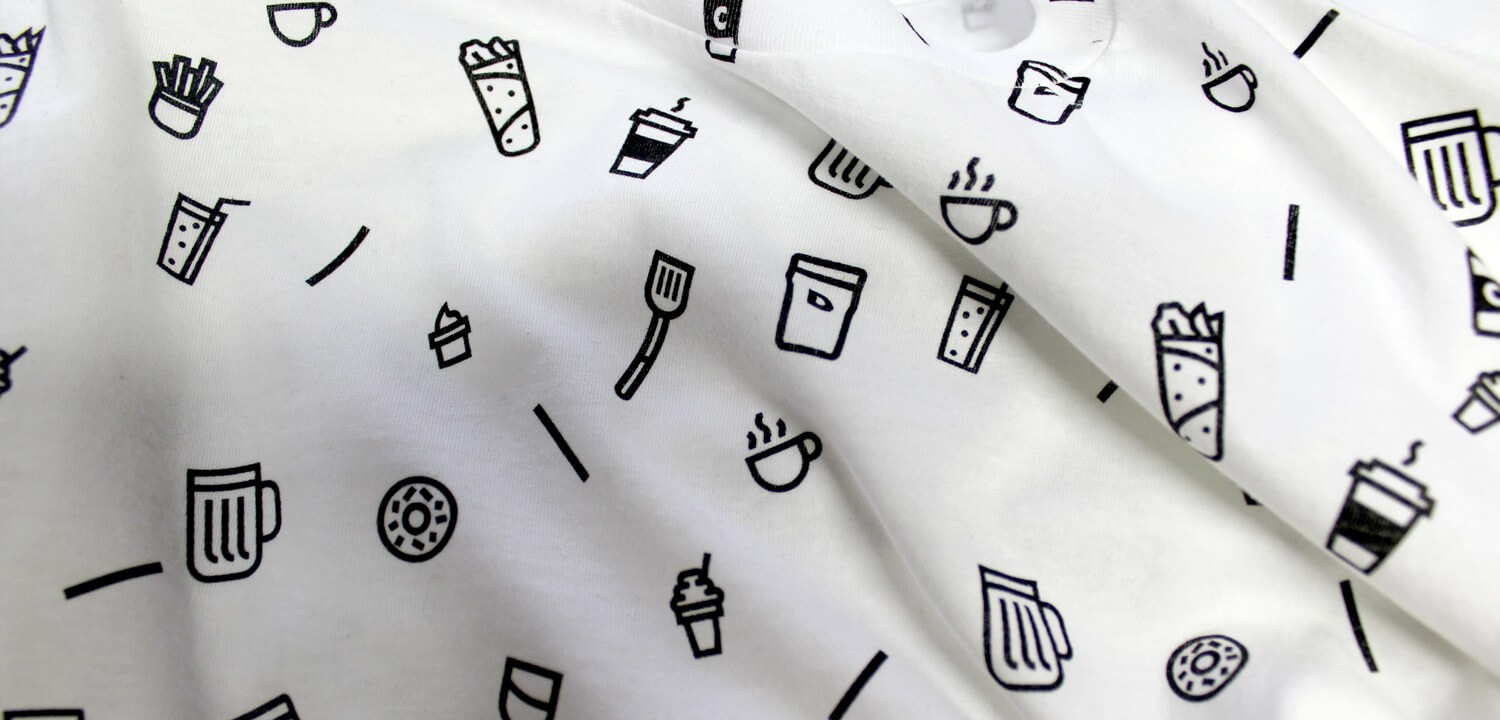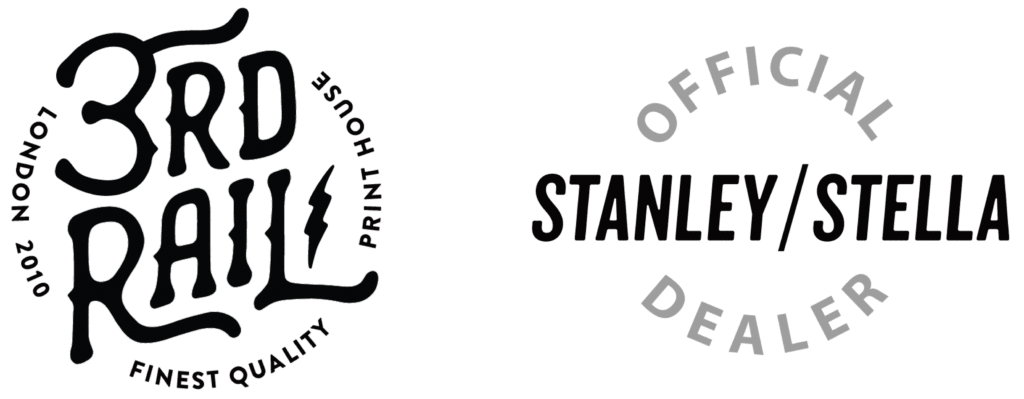Our all-over printing service is one that sets 3rd Rail apart from other t-shirt printers. We got textile designer Michelle Fifis to give us her insight into the process as well as sharing some top tips on how to create designs that will ensure a successful finished garment.

The term “ready-made” is commonly referred to as any garment or accessory that is sewn before being printed. Some examples would be blank t-shirts, tote bags, and hats. Manufacturers such as American Apparel and Gildan are in the business of manufacturing these blank garments and then distributing them to screenprinters and other businesses around the world. They offer many designers affordable options for creating their artwork upon, which is exciting for us all.
Ready-made garments are typically used for traditional centre front screen prints, but when you want to screen print a larger graphic that covers the entire garment you need to approach the process a bit differently. Here are a few tricks to help you ensure that your garment turns out just as you expected.
x
AVOID CREASES.
When a garment is laid flat on a table there are almost always folds and creases that occur—most often in the armpit areas. When ink is applied to these garments with a flat screen it will not be applied to any areas hidden by the creases, which could leave a gap in the artwork. This is often referred to as “ink fallout”. In many markets these creases are desired, adding to the uniqueness of the final product, but this isn’t always the case. If ink fallout is not the look you are going for I recommend working with basic garments over fashion ones, which are often more difficult to lay flat, and also developing artwork that avoids the crease areas.

x
AVOID SEAMS.
When artwork is screen printed over seams, particularly along the neckline, ink tends to smudge and clump together like you see in this example:

Again, some designers like this effect, but it is not a good fit for all markets. If you want to avoid this from happening, try to create artwork that ends just below the neckline and side seams.
x
USE NEGATIVE SPACE.
Screen printing ready-made garments with artwork that has heavy ink coverage can exaggerate the first 2 issues and give the final garment a stiff hand feel. To avoid these issues create artwork in which there is a lot of negative space, like in this example:

When a center front graphic just won’t cut it, all-over screen prints are a wonderful way to share your artwork with the world. By following these tips, along with 3rd Rail’s additional recommendations, your artwork will look as beautiful on fabric as it does on paper.
Interested in creating artwork for the design industry but not sure where to start? Let me help you! Turn Your Artwork into Textile Designs that Sell. It’s my free gift to you.
BIO
Michelle Fifis is a successful textile designer who has worked with such clients as Lucy Activewear, Columbia Sportswear, Jantzen Swimwear, Pendleton, and P&B Textiles. She writes about business and textile design on her blog, Pattern Observer. Her membership community, The Textile Design Lab, offers learning and networking opportunities to hundreds of designers worldwide.




